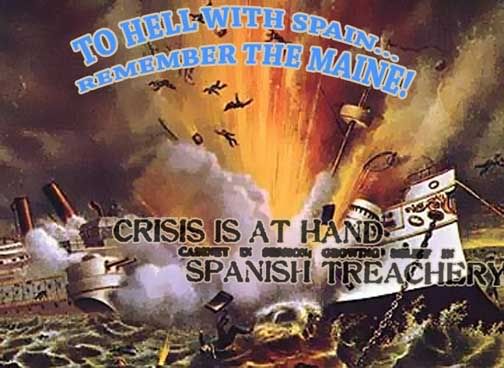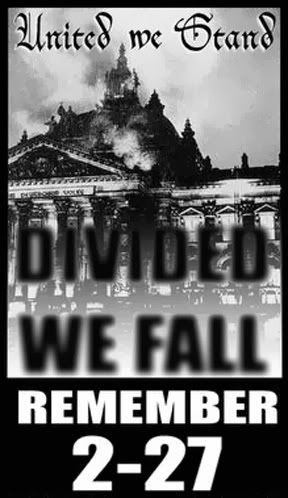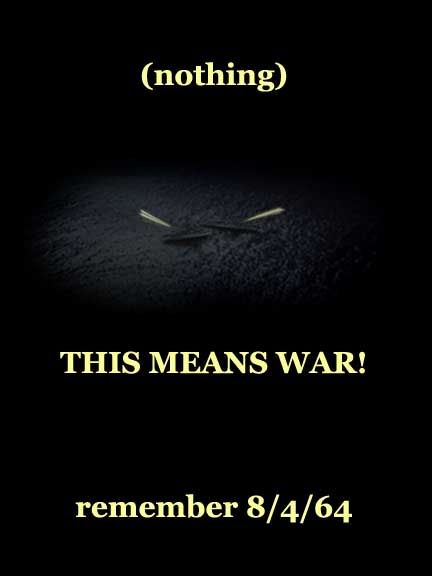[Pan Am 103 Series]
Adam Larson / Caustic Logic
October 27 2009
last update/edit 11/5
Shuttling: The First 17 Months
Part one of this series covered the 2008 interviews revealed in Tegenlight: Lockerbie Revisited, which showed a contradiction in whether the fragment of circuit board, PT/35(b) was taken to the United States. FBI SCOTBOM chief Richard Marquise and identifying FBI agent James “Tom” Thurman both told interviewer Gideon Levy that the fragment was brought to Washington and examined there, whereas British authorities and Marquise (after a short-lived change of memory) refuted the claim, insisting it stayed in the UK. This part will cover the entanglement of this evidence and agent Thurman throughout the Lockerbie case and beyond, drawing largely from the writings of Marquise. The special emphasis is on clues about whether Thurman worked from a photograph of the evidence or from the real item, as he told the documentary.
A 1991 Miami Herald article reported that Thurman was first sent to Lockerbie, on behalf of the FBI SCOTBOM investigation, two days after the December 21 explosion to help in “combing the countryside for clues." He worked right through Christmas, and in “about two months at the scene,” the article continues, he “pored over thousands of pieces of evidence.” [1] According to FBI task force chief Richard Marquise, however, the intrepid special agent had returned from Scotland by Jan 19 1989, when he gave a briefing to the FBI confirming prior assumptions that a bomb was responsible. [2, p.35]
Thurman returned to Lockerbie several times, shuttling across the Atlantic and even further out into the field, as initial clues converged on a PFLPGC attack perhaps involving Jordanian agent and bomb-maker Marwan Khreesat. Marquise reveled that “Thurman had been part of the team that interviewed Khreesat” in Jordan, November 1989. [2, p.60] This special interview, carried out with CIA brokerage, and its (reportedly ambiguous) results were kept from Scottish investigators, causing some tensions later.
On Jan 10 1990 new Senior Investigating Officer Stuart Henderson (who replaced John Orr) presented at a meeting in the UK. He did not mention the timer fragment to all, but off to the side told Marquise and FBI’s ASAC John Kelso about it. They showed interest in helping find a match, but Henderson insisted on going it alone. “This decision cost us six months,” Marquise writes. [2, p.58]
On Cloud Nine: June1990-November 1991
Actually it was five months delayed; it was at an investigator’s conference in Virginia on June 11 when Marquise relates how the Scottish authorities finally made their puzzlement over the fragment known to all – 55 companies checked to no avail. Thurman “approached Henderson and asked if he could take photographs of PT-35 and attempt to identify it. Henderson, who believed the Scots had done all they could do, agreed.” [2, p 60] This passage is crucial to move claims, and rather ambiguous. It seems to read that Thurman, in Arlington, was allowed to take a picture of evidence Henderson had there with him. It could also mean a request to retain one of the photo-prints there, or to take a picture of the single photo they brought, or fly to Scotland to photograph PT/35(b). The last option seems out, given the mechanics of identification that followed. I remain agnostic on the reading here, and on its value as one of Mr. Marquise’s sometimes confused recollections.
The Herald decided after talking with Thurman that he “meticulously compared the picture of the fragment to hundreds of other devices,” a lengthy-sounding process. [1] The agent told the show Air Crash Investigation (in early 2008?): “I spent, uh, months, literally, looking through all about the files of the FBI on other examinations that we had, uh, conducted over many many many years. […] After a period I just ran out of leads” and was forced to look “outside the physical FBI laboratory.” [3]
But Marquise said “what Thurman did yielded fruit within two days. […] Henderson and his colleagues were on an airplane headed back to Scotland;” having just left from the Virginia conference, and the discovery “would turn Henderson around quicker than he ever imagined,” putting them back stateside within 24 hours of the discovery. Further evidence against Thurman’s months claim is his own well-memorized “day that I made the identification,” recalling it as one would a wedding anniversary: June 15 1989. He had four days tops to get this grueling season of cross-checking out of the way.
What Thurman did, Marquise sums up, is know where to look. He took the photo to a CIA explosives expert “Orkin” (real name unknown), who helped locate files on a possible fit – a circuit board style found in an unclear number of timers confiscated, by the CIA, in African nations Togo and Senegal in 1986 and ‘88 respectively. The Senegal timer had somehow gone missing, although there was a photo of its circuit board, but the Togo timer was physically available for Thurman to look at the board inside. Upon confirming the similarity, “within a few minutes, literally, I started getting cold chills,” he told Air Crash Investigation, a feeling that still haunts him since he “can still see that moment so vividly in my mind.” [3] That he got these chills only after getting access to the CIA’s special stores is proof the Agency is right to claim much of the credit, for the discovery, as they have in places: “the CIA’s most important contribution in helping secure the conviction” was “when a CIA engineer was able to identify the timer […] shifting the focus of the probe from a Palestinian terrorist group to Libya.” [4]
Later a marking saying MEBO, scratched out, was identified on the Togo timer’s board. Thurman has claimed he and others labored over this, contacting manufacturers trying to identify “M580” for some time before accepting that it was Mebo, the name of a Swiss firm supplying timers to rogue governments, including Libya. Thurman said they had “some inkling that’s what it was from the beginning, but we didn’t want to say okay, it’s Mebo’s exclusive, anything else, until we were absolutely certain” that the letters on there were indeed M-E-B-O. [5] Then they decided it was definitely Mebo’s exclusive for Libya only and only usable by Libyans and unable to fall into anyone else’s hands. Except the CIA, but they can still account for 50% of the ones they’ve been known to intercept.
Marquise later enthused how Thurman’s immaculate forensic work “quickly put us on a new track leading to the eventual solution,” a solution that shaped up into the indictments of al Megrahi and Fhimah on Nov 13 1991. This was Thurman’s prime-time moment and he seized it, doing his now-famous Nov 15 interview with ABC News, followed by other moppings-up of public adoration, like that Miami Herald article (Nov 30), where he sounded like a laid-off Don Henley lyricist: "We're the blacksmiths of the FBI. The nuts and bolts. We get extremely dirty, actually, filthy dirty. … your adrenalin is pumping. You can't sleep." Driven by “his curiosity, coupled with a sense of duty and empathy for the victims … he didn't stop until he linked the bomb to the Libyan government.” [1] Once he had done so with “conclusive proof,” he told ABC, what he felt was "absolute, positively euphoria. I was on cloud nine." [6]
After the High: 95 to Present
This euphoric winning streak continued for Thurman, and he went on to big things, like pursuing the domestic terrorists behind the Oklahoma City bombing in 1995. But somehow, extended highs like this are often followed by a crash; starting in autumn 1995 charges were publicized that agent Thurman and his explosives unit “routinely” manipulated findings to favor the prosecution in at least two cases, including OKC. A 1997 Justice Department Inspector General investigation found Thurman to have no expertise in explosives at all, being a political scientist, not forensic, by training. After this he was formally barred from working in the crime lab or giving expert testimony in trials, and then “retired” from the bureau. [7]
This casts new light on his statements to ABC in '91; upon the match, “I knew at that point what it meant. Because if you will I‘m
It was there that the now-bearded professor accepted an interview from the BBC program Dispatches. Aired for the 10th anniversary in December 1998, the interviewer challenged him, as Levy later would: “I’m surprised that you only worked from a photograph. Umm, this can’t be ideal, um, an ideal way (inaudible).” [8] Considering with real physical evidence you can examine it in 3-D, measure its layering composition, and the nature of blast damage (gas pitting, etc.), this is a rather good point. But Thurman, missing that completely, responded quite differently than he would ten years later: “Actually, in a case like this it’s much better than the actual item. Because the photograph enlarged it, how many times? Uuuh… a number of times. So you can see the detail with the naked eye in that photograph, that you can’t see on the actual item, without the aid of a microscope.” [8]
Later he told the interviewer “See, the only thing I have is the photograph.” When challenged “but you said a photograph’s as good as the fragment,” he said “yeah, but at the same time, you can’t - it’s difficult to make an actual measurement through - through here (tapping pictures)” [8] There is so, and it’s called “scale.” What you can’t tell is things beyond the surface pattern similarities - the actual forensic details. All he did was look at a photo and a model timer and decided they were the same pattern, as any six-year-old and some dogs could do. Questioning his credentials in this area seems a little disingenuous, to say the least.
Then of course we have his 20th anniversary story shown in Lockerbie Revisited, where he told Levy “I did the real thing ... I had the real piece of evidence. … The photograph was the first thing, then the real piece of evidence was brought over … It wasn’t just a photograph.” He’s done too many interviews, giving us many points to analyze patterns. The guy clearly has a penchant for emphasizing the reality, the intensity, of things in a way suggesting some underlying dissociation. (eg, heavy use of “actually,” “literally,” “physically,” and absolutes: “absolutely,” “positive,” “certain,” “forensic,” etc. ) He seems to harbor few, but loud memories that like to exaggerate themselves. They change over time in detail, but not in volume or the tone of self-congratulation for his own rigorous diligence. Or are these really memories?
Sources:
[1] Roser, Ann. “'Nuts and Bolts’ Work Pays Off in Lockerbie Probe.” The Miami Herald. Published November 30, 1991. Link.
[2] Marquise, Richard. SCOTBOM: Evidence and the Lockerbie Investigation, Algora Publishing. Sept. 1, 2006. 268 pages. Google Books.
[3] Air Crash Investigation: Lockerbie. Season 6, episode one. Aired 2008. Youtube link.
[4] http://www.afio.com/sections/wins/2001/2001-06.html
[5] The Maltese Double Cross - Lockerbie. Film, Hemar Enterprises, 1994, 156 minutes. Written, produced, and directed by Allan Francovich. Wikipedia page - Google video (1hr, 6 min in)
[6] Biewen, John and Ian Ferguson. “Shadow Over Lockerbie: Mass Murder Over Scotland.” American Radio Works, National public Radio. March 2000. http://americanradioworks.publicradio.org/features/lockerbie/story/printable_story.html
[7] Peirce, Gareth. “The Framing of Al Megrahi.” September 24 2009. London Review of Books. http://www.lrb.co.uk/v31/n18/peir01_.html
[8] Dispaches: The Lockerbie Trial. Reporter: David Jessel. A Just television production for Channel Four Television. Aired December 1998. Video (MP4)













No comments:
Post a Comment